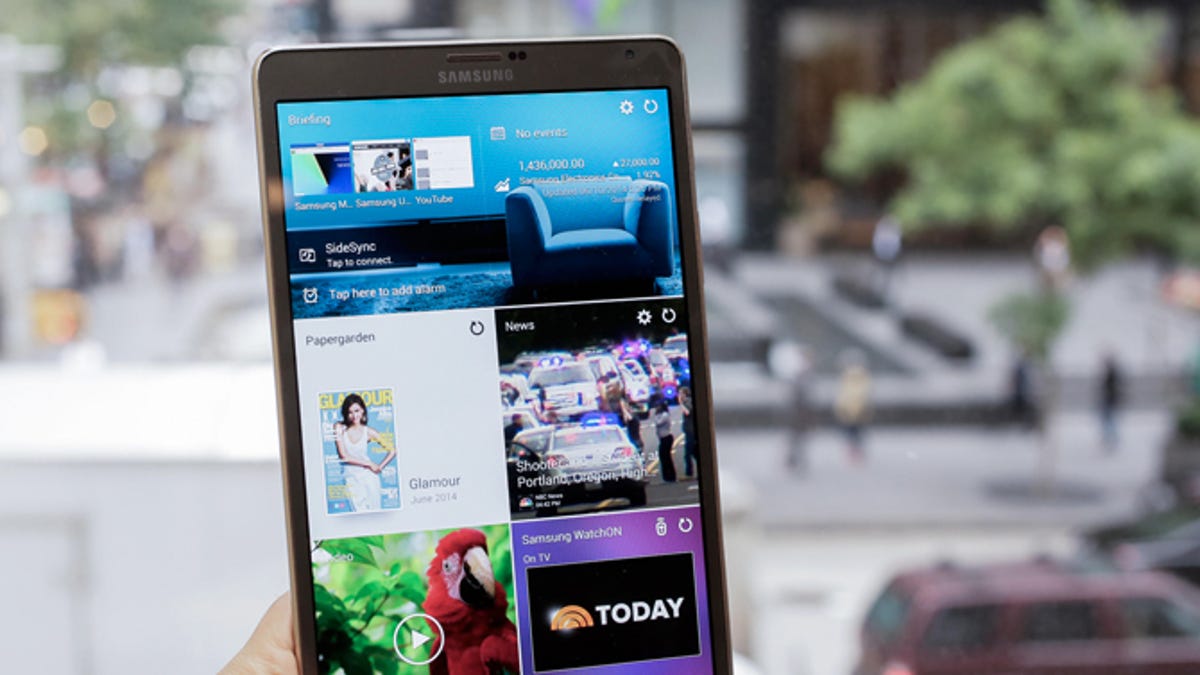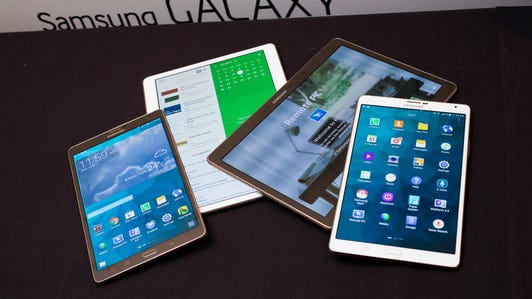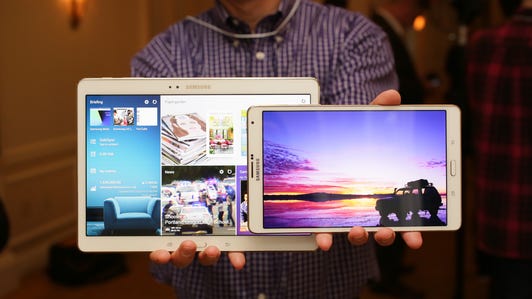
Sarah Tew/CNET
Samsung Electronics may have a dizzying array of tablets on sale, but for customers seeking its flagship products, the answer is simple.
“If you’re a Galaxy S fan, the (Galaxy Tab S) is the tablet for you,” Nick DiCarlo, a product and marketing executive with Samsung’s US mobile business, said in an interview on Thursday.
Samsung yesterday unveiled the Galaxy Tab S — which comes with either an 8.4- or 10.5-inch display — at a high-profile launch event at Madison Square Garden’s theater in Manhattan. The tablet boasts a brighter and more vivid display, which Samsung was eager to demonstrate, stacking its Tab S next to Apple’s iPad for direct comparisons.
The Galaxy Tab S represents Samsung’s flagship product, the “S” signifying a link to the company’s popular Galaxy S franchise of premium smartphones. With the Tab S, Samsung hopes to emulate its success in smartphones, where it overtook Apple on the strength of its Galaxy S line. While the company has had more than a dozen tablets on the market, it didn’t believe it had a true marquee product until now.


Sarah Tew/CNET
“There was a clear gap in the flagship space that we wanted to fill,” DiCarlo said.
The announcement — as evidenced by its willingness to draw comparisons to the iPad — marks a clear shot across the bow at Apple. While many other companies have sought success in creating budget tablets that retail for $300 or less, Samsung has stuck to its guns with its premium pricing.
The base Wi-Fi-only 10.5-inch Tab S costs $500, while the 8.4-inch version costs $400, comparable to Apple’s line-up.
Samsung plans on marketing the Tab S aggressively, according to DiCarlo.
Samsung Galaxy Tab S: Hands-on with Samsung’s newest tablet (pictures)






“We’re going to go big,” he said.
DiCarlo wouldn’t go so far as to say Samsung would spend as much as it did promoting its Galaxy S smartphone line, noting that it was too early to tell and that the tablet business was different than the smartphone business.
He added that the tablet’s launch in July would mean it would be ready for the critical back-to-school selling season.
More recently, the tablet business has been one facing questions about whether its momentum was slowing. Industry shipments of tablets missed disappointed in the first quarter, according to IDC, noting that growth slowed to just 3.9 percent from a year ago.
Related stories
- Samsung unveils Galaxy Tab S tablets
- Samsung Galaxy Tab vs. Note vs. Pro
- Samsung Galaxy Tab S (hands on)
Apple, a key proxy for the tablet market, saw its shipments decline by 16 percent from a year ago in the first quarter, which the company chalked up to inventory issues that will eventually cleared up.
Samsung, at least, has reason to be hopeful. Its first-quarter shipments rose 32 percent in the same period.
“There are some manufacturer-specific dynamics that make the business difficult for different people,” DiCarlo said.
Despite Samsung’s optimism, Apple continues to hold the leadership position in market share for tablets. While the iPad has become an iconic device easily recognizable in public, few Samsung tablets have so far stood out.
As for the rest of its portfolio, DiCarlo said that even if they don’t garner the same attention, there remains a market for its wide array of options.
Still, he said the “weight of the marketing will be centered here,” referring to the Tab S.



